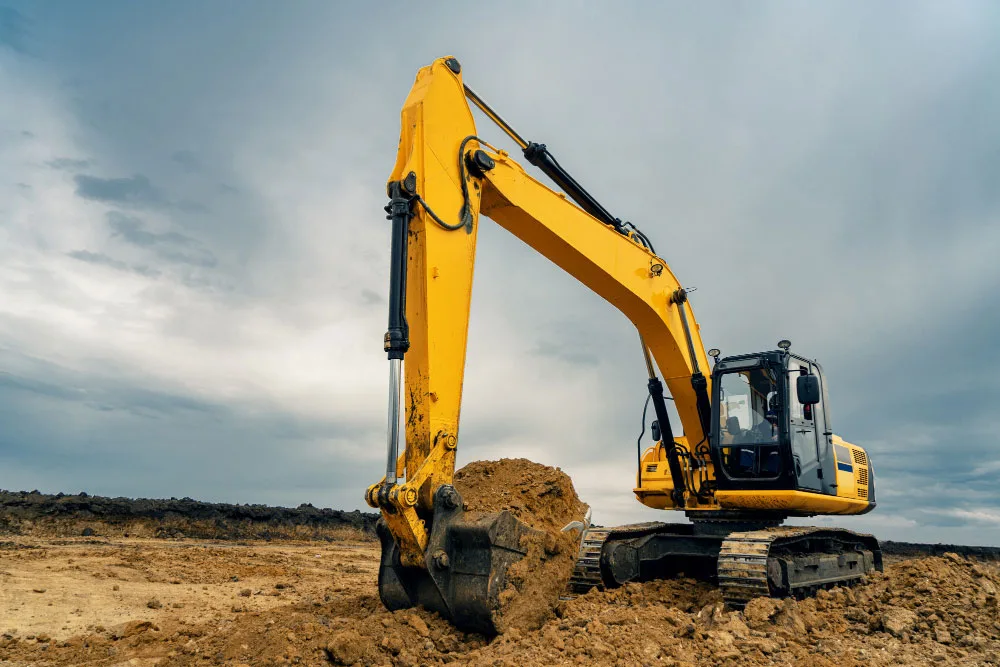
Excavation is an essential part of any construction project, setting the foundation for success from the ground up. It involves digging, moving and shaping the earth to create a level surface that can support the weight of a building. Whether it’s a small residential property or a large commercial development, proper excavation is critical to ensure that the construction process goes smoothly and the end result is structurally sound. From clearing the land to creating a solid base for the building, excavation is the first step towards building something great. In this article, we will explore the importance of excavation in the construction process and how it sets the foundation for success. So, whether you’re a construction professional or simply interested in the building process, read on to discover the key role that excavation plays in the world of construction.
Excavation is the foundation of any successful construction project. Proper excavation ensures that the building site is level and stable, which is essential for the safety of the workers and the structure being built. Excavation also ensures that the building’s foundation is properly supported, which is critical for the building’s long-term stability. Additionally, excavation is important because it allows for the proper drainage of water away from the building, which helps to prevent water damage and flooding.
There are several types of excavation that are used in construction projects. One of the most common types is called cut and fill excavation. This involves cutting into the ground and removing soil to create a level surface for the building. The removed soil is then used to fill in other areas of the site that may be uneven or require additional support. Another type of excavation is called trench excavation, which is used to create trenches for utilities such as water, gas, and electricity. This type of excavation is typically narrower and deeper than cut and fill excavation.
Excavation requires specialized equipment that is designed to move large amounts of earth quickly and efficiently. Some of the most common excavation equipment includes excavators, bulldozers, and backhoes. Excavators are typically used for larger projects and are capable of moving large amounts of earth quickly. Bulldozers are used to clear large areas of land and to level the ground. Backhoes are smaller machines that are typically used for smaller projects and are capable of digging into tight spaces.
Before excavation can begin, there are several important steps that need to be taken. The first step is to obtain any necessary permits and approvals from local authorities. This may include permits for excavation, building permits, and environmental permits. Once all permits have been obtained, the site needs to be surveyed to determine the exact location of the building and any utilities that may be on the property. The site also needs to be marked to ensure that the excavation equipment is digging in the correct location.
The excavation process typically begins with clearing the site of any trees, rocks, or other obstacles that may be in the way. Once the site has been cleared, the excavation equipment is brought in to begin digging. The soil is removed from the site and either transported to another location or used to fill in other areas of the site. The depth and width of the excavation will depend on the size of the building and the type of foundation that is being used. Once the excavation is complete, the site is graded to ensure that it is level and stable.
Excavation can be a dangerous process, and it is important to take the necessary safety precautions to prevent accidents and injuries. One of the most important safety precautions is to ensure that the excavation site is properly marked and that workers are aware of any hazards that may be present. It is also important to ensure that all excavation equipment is properly maintained and that workers are properly trained in how to use it. Additionally, workers should wear the appropriate safety gear, such as hard hats and safety glasses, to protect themselves from flying debris and other hazards.
Excavation can be a complex process, and there are several common mistakes that can be made. One of the most common mistakes is failing to properly survey the site before excavation begins. This can result in the excavation being in the wrong location or hitting utility lines that are buried underground. Another common mistake is failing to properly compact the soil after excavation is complete. This can result in the building settling over time, which can lead to structural damage and other issues.
Excavation is the foundation of any successful construction project. Proper excavation ensures that the building site is level and stable, which is essential for the safety of the workers and the structure being built. Excavation also ensures that the building’s foundation is properly supported, which is critical for the building’s long-term stability. Additionally, excavation is important because it allows for the proper drainage of water away from the building, which helps to prevent water damage and flooding. Without proper excavation, the entire construction project can be compromised.
In conclusion, excavation is a critical part of any construction project. Proper excavation ensures that the building site is level and stable, which is essential for the safety of the workers and the structure being built. It also ensures that the building’s foundation is properly supported, which is critical for the building’s long-term stability. Additionally, excavation allows for the proper drainage of water away from the building, which helps to prevent water damage and flooding. By understanding the importance of excavation and taking the necessary safety precautions, you can help ensure the success of any construction project.

©2025 Red Raptors Pty Ltd, All Rights Reserved. Design by MakTal

We accept all major credit cards
